The previous post and Mann's Doktor Faustus in this journal
suggest a look at . . .
Friday, January 13, 2023
Thursday, September 22, 2022
Affine Dürer
The previous post's image illustrating the
ancient Lo Shu square as an affine transformation
suggests a similar view of Dürer's square.
That view illustrates the structural principle
underlying the diamond theorem —
Saturday, February 16, 2019
Melancholy for Dürer
Wednesday, October 18, 2017
Dürer for St. Luke’s Day
Structure of the Dürer magic square
16 3 2 13
5 10 11 8 decreased by 1 is …
9 6 7 12
4 15 14 1
15 2 1 12
4 9 10 7
8 5 6 11
3 14 13 0 .
Base 4 —
33 02 01 30
10 21 22 13
20 11 12 23
03 32 31 00 .
Two-part decomposition of base-4 array
as two (non-Latin) orthogonal arrays —
3 0 0 3 3 2 1 0
1 2 2 1 0 1 2 3
2 1 1 2 0 1 2 3
0 3 3 0 3 2 1 0 .
Base 2 –
1111 0010 0001 1100
0100 1001 1010 0111
1000 0101 0110 1011
0011 1110 1101 0000 .
Four-part decomposition of base-2 array
as four affine hyperplanes over GF(2) —
1001 1001 1100 1010
0110 1001 0011 0101
1001 0110 0011 0101
0110 0110 1100 1010 .
— Steven H. Cullinane,
October 18, 2017
See also recent related analyses of
noted 3×3 and 5×5 magic squares.
Thursday, September 19, 2024
Embedding a Language Witch
Continuing yesterday's "Bell, Book and Candle" theme . . .

[Such lines and planes have not been, in mathematical language,
"translated."]
— Paul R. Halmos, Finite Dimensional Vector Spaces,
Princeton University Press, 1948, page 14
Candle from Sense8, Season 1, Episode 1: “Limbic Resonance”
Thursday, July 11, 2024
Saturday, May 18, 2024
The Godfather’s Art
Cover illustration:
Spies returning from the land of
Canaan with a cluster of grapes.
Colored woodcut from
Biblia Sacra Germanica ,
Nuremberg, Anton Koberger, 1483.
Victoria and Albert Museum, London.

Related material —
The Faustus Square :
Design from 1514
Thursday, January 18, 2024
But Seriously: Mathematics for Davos
Saturday, January 21, 2023
Dead-Poet Witcraft
"Death is the mother of beauty." — Wallace Stevens
From the 2020 Feast of St. Wallace Stevens,
who reportedly died in 1955 on August 2 —
Related material —
Exercise: Can each order-4 magic square be obtained by some
transformation like the one above (i.e., preserving affine hyperplanes)?
If not, why not?
Update of 31 Jan. 2023 — Spoiler: Remarks by Tilman Piesk.
Monday, January 17, 2022
Finest Trick
"The Magician’s finest trick was to
dismantle the pretensions of genius
while preserving his own lofty stature."
— Alex Ross in The New Yorker , Jan. 17, 2022
Related material —
Meanwhile . . .
Monday, March 1, 2021
Choice of Viewpoint . . .
Sunday, August 2, 2020
Tuesday, February 20, 2018
Sunday, August 7, 2016
A Talisman for Finkelstein
The late physicist David Ritz Finkelstein on the magic square
in Dürer's "Melencolia I" —
"As a child I wondered why such a square was called magic.
The Occult Philosophy [of Agrippa] answers this question
at least. They were used as magical talismans."
The correspondence in the previous post between
Figures A and B may serve as a devotional talisman
in memory of Finkelstein, a physicist who, in the sort of
magical thinking enjoyed by traditional Catholics, might
still be lingering in Purgatory.
See also this journal on the date of Finkelstein's death —
Saturday, March 7, 2015
Film and Phenomenology
Continued from All Hallows' Eve, 2014.
Last year's Halloween post displayed the
Dürer print Knight, Death, and the Devil
(illustrated below on the cover of the book
Film and Phenomenology by Allan Casebier).
Cover illustration: Knight, Death, and the Devil,
by Albrecht Dürer
Some mathematics related to a different Dürer print —

Monday, November 3, 2014
Wisconsin Death Trip*
Courtesy of Mira Sorvino.
Enter Madison :
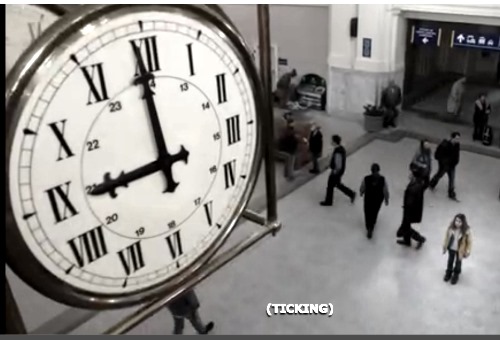
From “Intruders,” BBC America, Season 1, Episode 2, at 1:07 of 43:31.
“You sure know how to show a girl a good time.“
* The title is a reference to a Wisconsin-related Halloween post.
Friday, October 31, 2014
For the Late Hans Schneider
See a University of Wisconsin obituary for Schneider,
a leading expert on linear algebra who reportedly died
at 87 on Tuesday, October 28, 2014.
Some background on linear algebra and “magic” squares:
tonight’s 3 AM (ET) post and a search in this
journal for Knight, Death, and the Devil.
Click image to enlarge.
Structure
Introducing a group of 322,560 affine transformations of Dürer’s ‘Magic’ Square
The four vector-space substructures of digits in 1st, 2nd, 3rd, 4th place,
together with the diamond theorem, indicate that Dürer’s square “minus one”
can be transformed by permutations of rows, columns, and quadrants to a
square with (decimal) digits in the usual numerical order, increasing from
top left to bottom right. Such permutations form a group of order 322,560.
(Continued from Vector Addition in a Finite Field, Twelfth Night, 2013.)
Tuesday, April 9, 2013
Four Quartets
For the cruelest month
Click for a much larger version of the photo below.
These four Kountry Korn quartets are from the Fox Valleyaires
Men's Barbershop Chorus of Appleton, Wisconsin.
See also the fine arts here on Saturday, April 6, 2013—
The New York Times Magazine cover story
a decade ago, on Sunday, April 6, 2003:
"The artists demanded space
in tune with their aesthetic."
— "The Dia Generation,"
by Michael Kimmelman
Related material:
See Wikipedia for the difference between binary numbers
and binary coordinates from the finite Galois field GF(2).
For some background, see the relativity problem.
See also the chapter on vector spaces in Korn & Korn
(originally published by McGraw-Hill)—
 .
.
Monday, April 8, 2013
Magic for Jews
A commenter on Saturday's "Seize the Dia" has
suggested a look at the work of one Mark Collins.
Here is such a look (click to enlarge):
I find attempts to associate pure mathematics with the words
"magic" or "mystic" rather nauseating. (H. F. Baker's work
on Pascal's mystic hexagram is no exception; Baker was
stuck with Pascal's obnoxious adjective, but had no truck
with any mystic aspects of the hexagram.)
The remarks above by Clifford Pickover on Collins, Dürer, and
binary representations may interest some non-mathematicians,
who should not be encouraged to waste their time on this topic.
For the mathematics underlying the binary representation of
Dürer's square, see, for instance, my 1984 article "Binary
Coordinate Systems."
Those without the background to understand that article
may enjoy, instead of Pickover's abortive attempts above at
mathematical vulgarization, his impressively awful 2009 novel
Jews in Hyperspace .
Pickover's 2002 book on magic squares was, unfortunately,
published by the formerly reputable Princeton University Press.
Related material from today's Daily Princetonian :
See also Nash + Princeton in this journal.
Thursday, December 6, 2012
Magic Square
This post was suggested by the December 4th death
of modernist composer Jonathan Harvey, 73,
and by Harvey's reflections on his 2007 opera
Wagner Dream .
For related reflections, see the Oct. 10 post on
the Dürer magic square in Mann's Doctor Faustus .
See also a December 2nd post on the Nov. 18 death of
chess grandmaster Elena Akhmilovskaya Donaldson.

Sunday, December 2, 2012
Realism
From the Los Angeles Times yesterday—

"Chess player Elena Akhmilovskaya Donaldson sits
in deep concentration at the U.S. chess championship
in Seattle in 2002. (Greg Gilbert / Seattle Times /
January 5, 2002)"
Linda Shaw, Seattle Times :
"Elena Akhmilovskaya Donaldson, who was once the world's
second-ranked women's chess player and eloped in 1988
with the captain of the U.S. chess team when they were both
playing at a tournament in Greece, has died. She was 55.
Donaldson, who earned the title of international women's
grandmaster, died Nov. 18 in her adopted hometown of Seattle…."
From the Log24 post "Sermon" on the date of Donaldson's death,
Sunday, Nov. 18, 2012—
"You must allow us to play every conceivable combination of chess."
— Marie-Louise von Franz in Number and Time
An October 2011 post titled Realism in Plato's Cave displays
the following image:
Cover illustration: Knight, Death, and the Devil,
by Albrecht Dürer
George Steiner and myself in Closing the Circle, a Log24 post
of Sept. 4, 2009:
“Allegoric associations of death with chess are perennial….”
"Yes, they are."
For related remarks on knight moves and the devil, see
today's previous two posts, Knight's Labyrinth and The Rite.
Tuesday, January 10, 2012
Defining Form
(Continued from Epiphany and from yesterday.)
Detail from the current American Mathematical Society homepage—
Further detail, with a comparison to Dürer’s magic square—
 |
 |
The three interpenetrating planes in the foreground of Donmoyer‘s picture
provide a clue to the structure of the the magic square array behind them.
Group the 16 elements of Donmoyer’s array into four 4-sets corresponding to the
four rows of Dürer’s square, and apply the 4-color decomposition theorem.
Note the symmetry of the set of 3 line diagrams that result.
Now consider the 4-sets 1-4, 5-8, 9-12, and 13-16, and note that these
occupy the same positions in the Donmoyer square that 4-sets of
like elements occupy in the diamond-puzzle figure below—

Thus the Donmoyer array also enjoys the structural symmetry,
invariant under 322,560 transformations, of the diamond-puzzle figure.
Just as the decomposition theorem’s interpenetrating lines explain the structure
of a 4×4 square , the foreground’s interpenetrating planes explain the structure
of a 2x2x2 cube .
For an application to theology, recall that interpenetration is a technical term
in that field, and see the following post from last year—
| Saturday, June 25, 2011
— m759 @ 12:00 PM “… the formula ‘Three Hypostases in one Ousia ‘
Ousia
|
Monday, October 3, 2011
Realism in Plato’s Cave
In memory of the late combinatorialist-philosopher Gian-Carlo Rota…
Excerpts from the introduction to Allan Casebier's
Film and Phenomenology: Towards a Realist Theory of Cinematic Representation
(Cambridge Studies in Film, Cambridge University Press, 1991) —
Pages 1-2, pages 3-4, pages 5-6.
Cover illustration: Knight, Death, and the Devil, by Albrecht Dürer
Monday, August 8, 2011
Diamond Theory vs. Story Theory (continued)
Richard J. Trudeau, a mathematics professor and Unitarian minister, published in 1987 a book, The Non-Euclidean Revolution , that opposes what he calls the Story Theory of truth [i.e., Quine, nominalism, postmodernism] to what he calls the traditional Diamond Theory of truth [i.e., Plato, realism, the Roman Catholic Church]. This opposition goes back to the medieval "problem of universals" debated by scholastic philosophers.
(Trudeau may never have heard of, and at any rate did not mention, an earlier 1976 monograph on geometry, "Diamond Theory," whose subject and title are relevant.)
From yesterday's Sunday morning New York Times—
"Stories were the primary way our ancestors transmitted knowledge and values. Today we seek movies, novels and 'news stories' that put the events of the day in a form that our brains evolved to find compelling and memorable. Children crave bedtime stories…."
— Drew Westen, professor at Emory University
From May 22, 2009—
|
The above ad is by Diamond from last night’s
|
|
For further details, see Saturday's correspondences |
Thursday, May 27, 2010
A Gathering for Gardner
"You ain't been blue; no, no, no.
You ain't been blue,
Till you've had that mood indigo."
— Song lyrics, authorship disputed
Indigo (web color) (#4B0082)
"Pigment indigo (web color indigo) represents
the way the color indigo was always reproduced
in pigments, paints, or colored pencils in the 1950s."
Related mythology:
Indigo Children and the classic
1964 film Children of the Damned
Related non-mythology:
Friday, September 4, 2009
Friday September 4, 2009
Continued from Monday
“This is a chapel
of mischance;
ill luck betide it, ’tis
the cursedest kirk
that ever I came in!”
Philip Kennicott on
Kirk Varnedoe in
The Washington Post:
“Varnedoe’s lectures were
ultimately about faith,
about his faith in
the power of abstraction,
and abstraction as a kind of
anti-religious faith in itself….”
Kennicott’s remarks were
on Sunday, May 18, 2003.
They were subtitled
“Closing the Circle
on Abstract Art.”
Also on Sunday, May 18, 2003:
“Will the circle be unbroken?
As if some southern congregation
is praying we will come to understand.”
Princeton University Press:
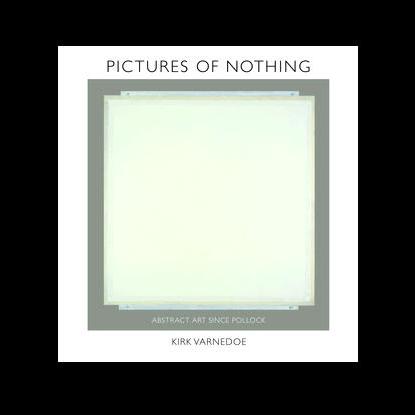
See also
Parmiggiani’s
Giordano Bruno —

Dürer’s Melencolia I —

and Log24 entries
of May 19-22, 2009,
ending with
“Steiner System” —

George Steiner on chess
(see yesterday morning):
“Allegoric associations of death with chess are perennial….”
Yes, they are.
April is Math Awareness Month.
This year’s theme is “mathematics and art.”

Cf. both of yesterday’s entries.
Friday, May 22, 2009
Friday May 22, 2009
New York Times
banner this morning:
Related material from
July 11, 2008:

|
The HSBC Logo Designer — Henry Steiner
Born in Austria and raised in New York, Steiner was educated at Yale under Paul Rand and attended the Sorbonne as a Fulbright Fellow. He is a past President of Alliance Graphique Internationale. Other professional affiliations include the American Institute of Graphic Arts, Chartered Society of Designers, Design Austria, and the New York Art Directors' Club. His Cross-Cultural Design: Communicating in the Global Marketplace was published by Thames and Hudson (1995). |
|
Charles Taylor,
"Epiphanies of Modernism," Chapter 24 of Sources of the Self (Cambridge U. Press, 1989, p. 477):
"… the object sets up
See also Talking of Michelangelo.
|
Related material suggested by
an ad last night on
ABC's Ugly Betty season finale:
Diamond from last night's
Log24 entry, with
four colored pencils from
Diane Robertson Design:

See also
A Four-Color Theorem.











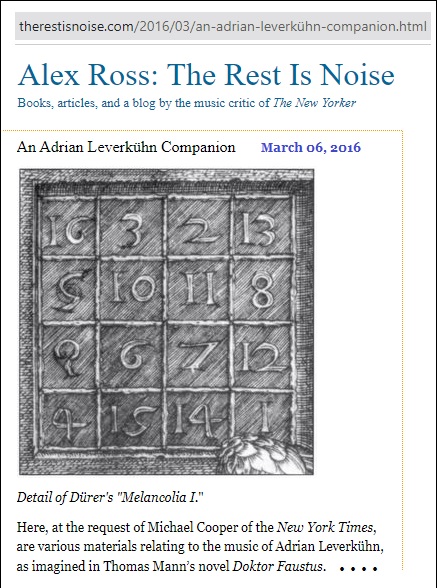



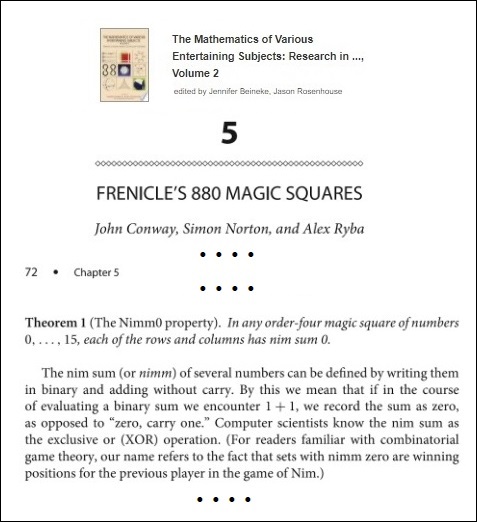







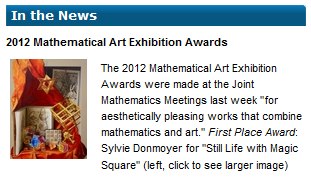






 He is an internationally recognized corporate identity consultant. Based in Hong Kong, his work for clients such as HongkongBank, IBM and Unilever is a major influence in Pacific Rim design.
He is an internationally recognized corporate identity consultant. Based in Hong Kong, his work for clients such as HongkongBank, IBM and Unilever is a major influence in Pacific Rim design.
